What's New
Displaying results 2251 - 2260 of 4052
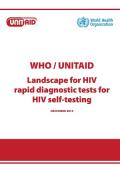
Resource | Publications,
This report presents the potential for HIV self-testing to contribute to achieving global 90–90–90 targets for treatment access by 2020, provides projections of the demand for and supply of HIV rapid diagnostic tests (RDTs) for self-testing and summarizes the emerging market landscape for self-testing. This information will likely be useful for manufacturers, donors, national programmes, researchers and many other global health stakeholders who are exploring the potential role of HIV self-testing.
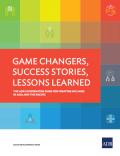
Resource | Publications,
The ADB Cooperation Fund for Fighting HIV/AIDS in Asia and the Pacific benefitted from a $19.2 million grant from the Government of Sweden with the goal of assisting ADB’s developing member countries meet their commitment to Millennium Development Goal 6, target 6A: to have halted by 2015 and begun to reverse the spread of HIV. The objective of the fund was to support these countries to develop a comprehensive AIDS response; enable them to partner with ADB in areas that play to the bank’s strategic value and advantages; and particularly to benefit subregions, countries and communities that are most vulnerable to HIV.
This report summarizes the experiences and lessons learned of the Cooperation Fund.
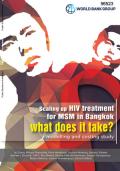
Resource | Publications,
The HIV epidemic amongst men who have sex with men (MSM) in Bangkok is substantial. The population size of MSM in Bangkok is 120,000-250,000, with approximately one-third (33.5 percent) considered high-risk, characterized by their young age, multiple partnerships, frequent unprotected anal intercourse, and sexual activities around MSM hotspots. In metropolitan Bangkok, HIV prevalence among MSM reportedly increased from 21 percent to 28 percent between 2000 and 2012. The Thai Working Group of Estimation and Projection (2013) projected an estimate of 39,000 new HIV infections would occur in Thailand during 2012-2016, based on the AIDS Epidemic Model (AEM).

Resource | Publications,
The prevalence of HIV among sex workers is 12 times greater than in the general population, but less than 1 percent of global funding for HIV is directed toward HIV and sex work. Although some HIV prevention efforts with sex workers have succeeded, many critical programming gaps remain. This brief aims to inform program implementers and policymakers on the key issues faced by sex workers, what has worked in HIV prevention efforts with sex workers, and actions that can be taken to better meet the needs of sex workers in the future.
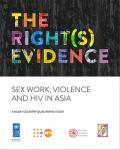
Resource | Publications,
The regional report of this multi-country study contains findings and recommendations to address violence experienced by sex workers in Asia. Sex workers experience extreme physical, sexual, emotional and economic violence at work, in health care and custodial settings, in their neighbourhoods and in their homes. This violence denies sex workers their fundamental human rights — to equal protection under the law; protection against torture, cruel, inhuman and degrading treatment; and their right to the highest attainable standard of physical and mental health. Research is increasingly demonstrating how violence contributes to the spread of HIV. In Asia, the HIV epidemic remains concentrated among key populations, including sex workers, people who inject drugs, men who have sex with men and transgender people. Realizing the human rights of female, male and transgender sex workers requires an understanding of the intersecting factors that affect their safety and their protection from violence.
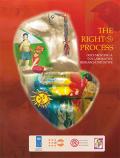
Resource | Publications,
This report chronicles the award-winning research process behind The Right(s) Evidence: Sex Work, Violence and HIV in Asia - A Multi-Country Qualitative Study. It documents lessons learned through the implementation of a rights-based approach, including the training and employment of sex worker peer researchers and the strategic use of research design to promote evidence to action in sensitive political environments. Details of the study design and interviews with contributors make this a practical guide for those planning or seeking to promote community-centered research for change.
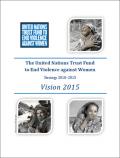
Resource | Publications,
Despite promising trends, there remains a vast gap between policy promises and the reach and impact of existing interventions, as well as a dearth of evidence-based knowledge on effective practices. Many women and girls remain at risk, without protection or access to services, and many laws and policies have been adopted without concrete implementation plans or budgets.
The UN Trust Fund has a key role to play in ending violence against women and girls by supporting the Secretary-General's UNiTE Campaign and by galvanizing governments, non-governmental organizations, and the private sector to join in the effort. The UN Trust Fund calls upon the public and private spheres to seize the unprecedented opportunity available in the next five years to turn promise into reality for the vast numbers of women and girls who experience violence in their lifetime.
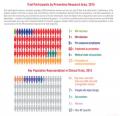
Resource | Infographics,
Given the higher rates of acquisition seen across so-called key populations—members of highly burdened and underserved groups—it is critical to provide access to the research process such that they can participate and reap more immediate benefit of scientific progress. Greater efforts must be made to include key populations in this crucial process for the HIV prevention response to be truly impactful. Excerpted from Px Wire.
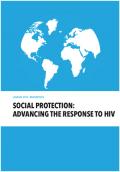
Resource | Publications,
The 10 case studies presented in this document clearly demonstrate that social protection works for HIV prevention, treatment, care and support. In particular, they show how social protection benefits the AIDS response through increased access to HIV services for all people including the most marginalized and excluded in society. The studies also demonstrate that carefully constructed and well-managed social protection programmes have the power to support people who are hardest to reach.
Resource | Publications,
HIV treatment is a cornerstone of the AIDS response, helping to prevent AIDS-related deaths and avert new infections. It also helps people living with HIV to live close-to-normal lifespans, thereby reducing HIV-related stigma. Evidence shows that HIV treatment, administered ideally as soon as possible after diagnosis, not only slows disease progression but also prevents onward HIV transmission. Moreover, the right to the highest attainable standard of health necessitates access to treatment and other medicines to ensure that people living with HIV can have long and productive lives.





